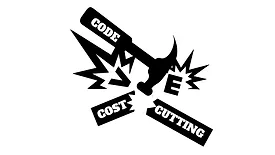Home » plumbing engineers
Articles Tagged with ''plumbing engineers''
Professional Plumbing Engineer Viewpoints | James Dipping
The cost of working from home.
Read More
PM Engineer 2023 Mechanical Engineer of the Year: Jonathan Cristino
AHA Consulting Engineers’ Jonathan Cristino has taken the lead in meeting decarbonization and electrification goals for new and existing buildings.
November 7, 2023
Strategic Plumbing Insights | Christoph Lohr
Plumbing science research trends
Emerging trends in plumbing science.
November 6, 2023
Plumbing Essentials — Design Approaches, Codes and Everything in Between | Lowell Manalo and Robert Thompson
An approach to efficient MEP equipment room design
Considerations for an optimized mechanical room.
October 6, 2023
PM Engineer 2023 Plumbing Engineer of the Year: Kelvin H. Kennedy
Kennedy leads RTM’s plumbing studio in Dallas-Fort Worth and recently became a minority partner in the firm.
October 5, 2023
Plumbing Talking Points | David Dexter
Where does a sanitary plumbing system begin and end?
Plumbing design professionals have an obligation to protect public health and safety.
October 3, 2023
Plumbing Essentials — Design Approaches, Codes and Everything in Between | Lowell Manalo
Plumbing systems for lab? What is so special about it?
To wait, or not to wait — that is the question
September 6, 2023
Strategic Plumbing Insights | Christoph Lohr
Engineering of plumbing systems at a crossroads
Legal concerns for engineering firms.
September 5, 2023
Plumbing Essentials — Design Approaches, Codes and Everything in Between | Lowell Manalo
Defending your hospital system design from VE and cost-cutting
Codes and standards can be the first line of defense.
August 9, 2023
Plumbing Talking Points | David Dexter
Obligations to the engineering profession
Volunteering offers numerous benefits for professional growth at all stages of one’s career.
August 7, 2023
Keep your content unclogged with our newsletters!
Stay in the know on the latest plumbing & piping industry trends.
JOIN TODAY!Copyright ©2025. All Rights Reserved BNP Media.
Design, CMS, Hosting & Web Development :: ePublishing















